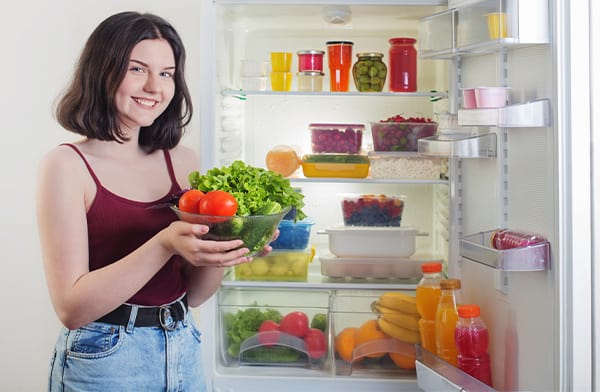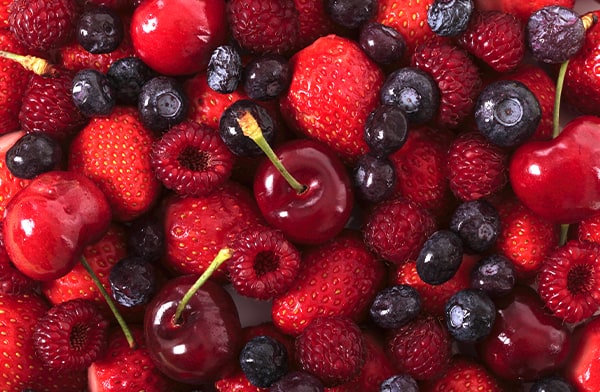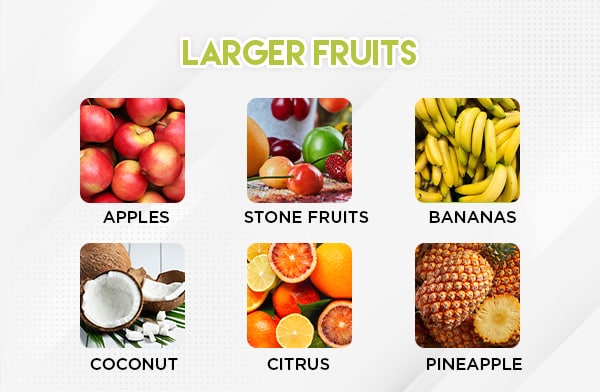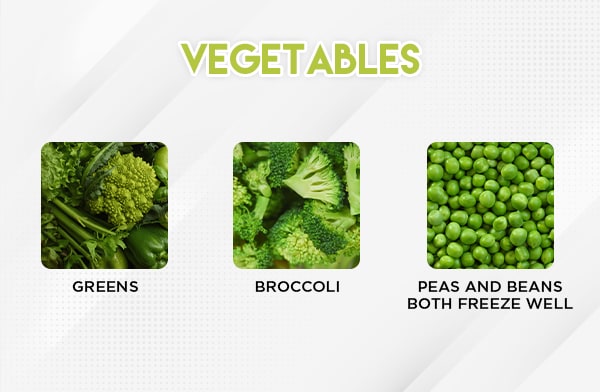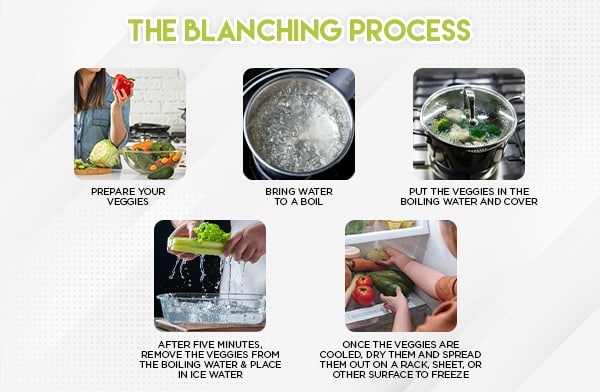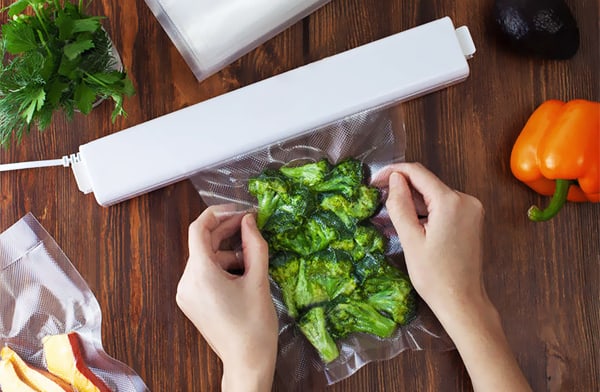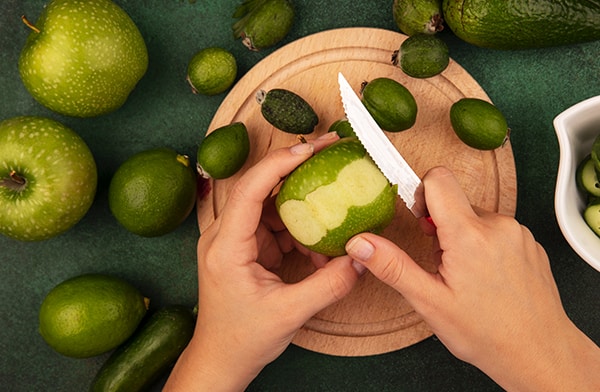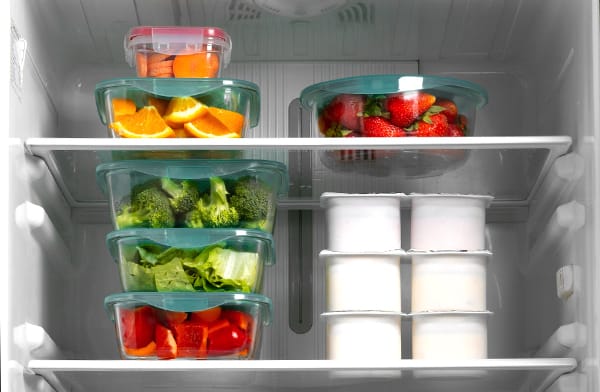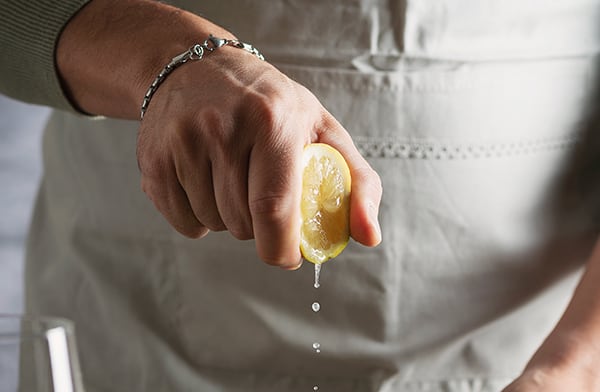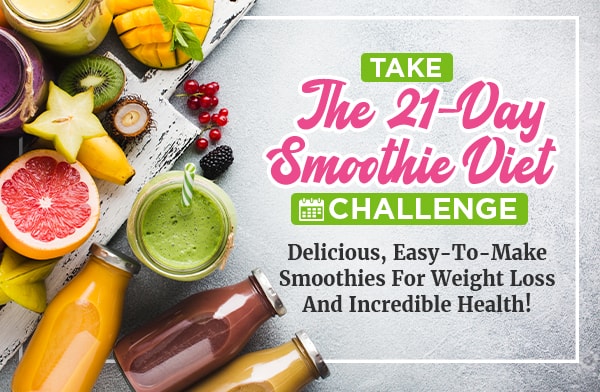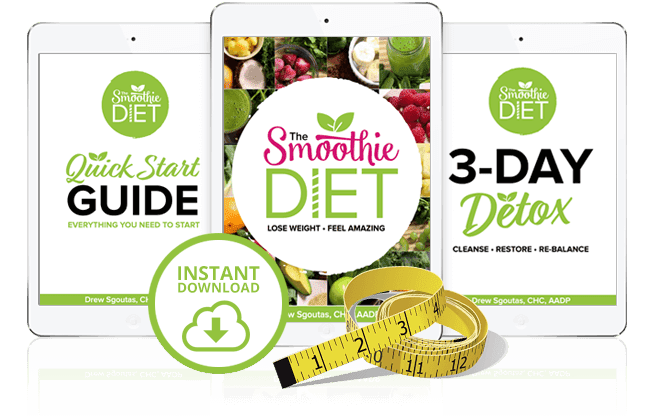A List of Freezer-Friendly Fruits and Vegetables for Smoothies
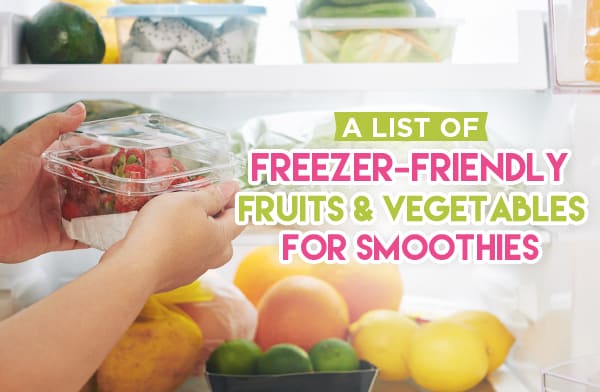
In the past, I’ve talked about what you can do to preserve your smoothies for times when you can’t get fresh ingredients. Generally, you have three choices.
- You can make smoothies in large batches and freeze most of them in individual portions. This takes up a lot of room in your freezer, requires thawing a fresh smoothie each day, and restricts how much variety you can have.
- You can use sub-par ingredients. Picking up whatever you can get your hands on means that when produce is out of season, you’re going to have bland fruit, wilted vegetables, and more expensive ingredients.
- You can freeze (or use frozen) ingredients. This way, you have a stock of ingredients ready to go and can pull out what you need for your smoothies without having to decide on your recipes in advance.
My recommendation is, of course, the third one. When you freeze ingredients, you can buy the freshest produce when it’s available and cheap and save enough for months without compromising your variety.
There are two downsides to this, though.
First, freezing your ingredients means adding a lot of, well, cold to your smoothies. This can often make them thicker than you might want, and you’ll need to find a way to thin them out. That’s easy, though.
The other problem is that some ingredients just don’t freeze very well. That’s what I’m here to discuss today; what are some freezer-friendly fruits and vegetables you can buy in bulk and freeze for your smoothies? Let’s dig in.
Easy Freezer Ingredients
First, let’s start with produce that is easy to freeze with little extra preparation.
For the most part, you can just toss these items into plastic baggies or containers to freeze, or freeze them on a baking sheet and package them up once they’re frozen. Now, depending on conditions, you might have to deal with frost or freezer burn, but I’ll give you tips on managing that later in the post. For now, the ingredients.
Berries and Small Fruits
First up, you have the berries and smaller fruits. These may soften when they’re thawed, but they freeze nicely, retain their color and shape, and don’t burst.
This category includes fruits such as Strawberries, Blueberries, Raspberries, Blackberries, Cherries, Cranberries, and Grapes. You can thaw them without much issue, or you can use them frozen as an ingredient directly.
Larger Fruits
Some larger fruits freeze quite nicely. You might need to do a little prep work for some of them, though.
Here are some ideas:
- Apples. Peel, core, and slice for ease of use. You can also toss them in acid to keep them from turning brown.
- Stone fruits. Stone fruits are fruits that have a central pit. Apricots, Nectarines, Plums, and their hybrids are all stone fruits. Likewise, Mangoes, Lychees, and Dates are all stone fruits and can be frozen in the same way. Typically, you want to slice them into bits and remove the stone for ease of use.
- Bananas. Bananas can be frozen in the peel or peeled and cut into portions to freeze. Be aware that if you thaw a frozen banana, it will turn to mush. This is great for banana bread, but it can make your smoothie really thin. I usually recommend using them while still frozen for that reason.
- Coconut. Coconut is easy to freeze, though you can also buy dehydrated or dried coconut instead. It all depends on what you want out of your coconut.
- Citrus. Lemons, Limes, Oranges, Grapefruit, and other citrus fruits can be frozen. You can freeze them whole, or you can slice them into rounds or wedges and freeze those, or you can juice them and freeze the juice.
- Pineapple. Pineapple can be frozen quite easily once it’s prepared. Cut off the outer rind, then slice the fruit from the core and chop it into pieces to freeze. You may want to do this over a container of some sort to save the juice that drips away as well.
Citrus fruits don’t thaw well. That is to say; when thawed, they will have a completely different texture than when you froze them. If you’ve ever looked at citrus, you’ve seen the small juice bubbles that make up the flesh of the fruit. These burst when frozen, so the citrus becomes a mushy mess. It’s still delicious but better to use when frozen.
Watermelon is the same way. You can freeze it and use it frozen, but trying to thaw it will leave you with mush instead.
Vegetables
Some vegetables freeze quite well. Unfortunately, a lot of them aren’t really great ingredients for smoothies. For example, Asparagus, Beets, Eggplant, and Turnips all freeze very well, but you’re not all that likely to use them in smoothies.
Other veggies can be used in smoothies, though, such as:
- Greens. I like greens in every smoothie. You might want to blanch them (more on that later), so they retain their color, but if you’re not concerned about a darker green, you can freeze them as they are.
- Broccoli. This green can go great in some smoothies, and it can freeze quite nicely.
- Peas and Beans both freeze well. Green beans might like some blanching, but other beans are fine without.
On the other hand, some veggies don’t freeze very well at all. Cucumbers are a primary offender here.
Freezer Produce that Needs Work
There’s one key to a lot of ingredients you might want to freeze, particularly vegetables. What is it?
Blanching
Blanching is a way of flash-cooking veggies, then cooling them to avoid over-cooking.
It helps preserve the color and the texture of the veggies, preventing freezing from damaging the fragile parts of the plants. Luckily, blanching veggies is very easy.
- Prepare your veggies. Chop up what you want to be chopped up, wash your produce, and so on.
- Bring water to a boil. You want about a gallon of water per pound of veggies, though you can do this in steps instead of all at once.
- Put the veggies in the boiling water and cover. Return the water to a boil and cook your veggies for five minutes.
- After five minutes, remove the veggies from the boiling water and place them in ice water. This stops the cooking, keeps the bright colors of the veggies, and brings them down to a temperature you can handle.
- Once the veggies are cooled, dry them and spread them out on a rack, sheet, or other surface to freeze. Once frozen, you can pack them away.
Some of the more fragile or small veggies might not need a full five minutes. Spinach, in particular, might break down too much if you cook it too long.
Tips to Keep Frozen Produce Longer
When you’re freezing your produce for smoothies, you want it to last, and that means you don’t want it to suffer damage in the freezer. Anyone who has tried to use freezer-burned meat or frost-covered fries knows just how much of a hassle it can be. So, here are the best tips I have to help avoid having to deal with the problems a freezer can bring to the table.
Get a chest freezer.
While this isn’t exactly a tip to keep your produce going, it’s useful if you’re going to dig into the smoothie lifestyle. A small chest freezer has a much greater capacity and a much more consistent temperature than a standard fridge-freezer. With one on deck, you can stock up on a lot more produce than you would be able to otherwise.
Consider vacuum-sealing ingredients before you freeze them.
A vacuum sealer is a great investment if you’re going to be doing a lot of freezing. Both freezer burn and frost forming are stages of the same process. That process is called sublimation.
Essentially, when you freeze a food item, the moisture in it freezes into its own ice crystals. These crystals migrate to the surface of the food. Slowly, over time, they sublimate into the air, converting from a solid to a gas without passing through the liquid stage (which it can’t because of the temperature).
Moisture in the air can build up, which causes your produce to be covered in frost. If you want to use this produce for smoothies, you’ll need to get rid of the frost. You can rinse it, warm it up, let it thaw, or just chip it off, it’s not that hard, but it’s tedious and time-consuming. You don’t want to deal with that every morning when you make your smoothies.
Over time, especially in dry areas, that moisture sublimates. It disappears, leaving the food behind. That’s freezer burn. The surface of the food, be it fruit or meat or veggies, ends up dry, tough, and gross.
There are two ways to avoid freezer burn. The first is to use your produce quickly. Freezer burn takes time, after all, so if you’re cycling through your produce quickly, you won’t have to worry about any of it going off.
The second way is to isolate the food from the outside. You might think a zipper-lock plastic bag, even one designed for freezer use, would be able to do this. You would be wrong. These bags always have gaps, either at the corners of the zipper or even in the seams. Even that tiny amount of exposure is enough to allow sublimation to happen.
A vacuum sealer removes as much of the air as possible from the food and seals the package away from exposure to more air. This way, you can keep your produce from getting freezer burned even if you’re keeping it around for months to use the produce off-season.
The only downside is that it adds an extra step of preparation to your freezing process, and the bags you store your produce in generally aren’t reusable, so you’ll be consuming a decent amount of plastic. This may or may not be objectionable to you.
Prepare your ingredients ahead of time.
I mentioned this up above, but it’s a lot easier to prepare your produce ahead of time than it is to do so when it’s frozen, or thaw it and mess with the textures. Peel apples, slice the rind and core out of pineapple, wash your berries and greens; there’s a lot of little preparation to do with pretty much every piece of produce you want to pack away.
Try to freeze individual packs of ingredients rather than bulk batches.
One of the best tips I can give you for freezing produce is to portion it out ahead of time. It’s easier to store, easier to handle, and easier to use. It’s easier to grab a single pack of greens for a smoothie than it is to try to measure out a handful of frozen leaves, right?
Berries can be frozen in one big batch, sometimes. Grapes and Blueberries, for example, freeze individually and can still be scooped and measured when frozen. Strawberries, though, tend to stick together when frozen, so I would recommend measuring those out. Obviously, any fruit you cut into pieces will freeze together, so portion those out too.
Consider an acid bath for fruit.
Some fruits, like apples, brown when left to their own devices and exposed to oxygen. These can benefit from an “acid bath,” which just means tossing them in something acidic. Lemon juice is the easiest, but you can also get pure ascorbic acid (vitamin C) powder or citric acid.
It will help maintain the appearance of the fruit, though it won’t help with the texture.
Enjoy Your Smoothies
The key to a perfect smoothie is good ingredients. Freezing them ahead of time helps ensure that you have those good ingredients any time you want to make a smoothie, whether or not they’re in season. Stock up in the summer, enjoy smoothies when the produce is out of season, and repeat next year.
If you have any questions about how to prepare or store your ingredients, ask me in the comments. I’d love to help.

